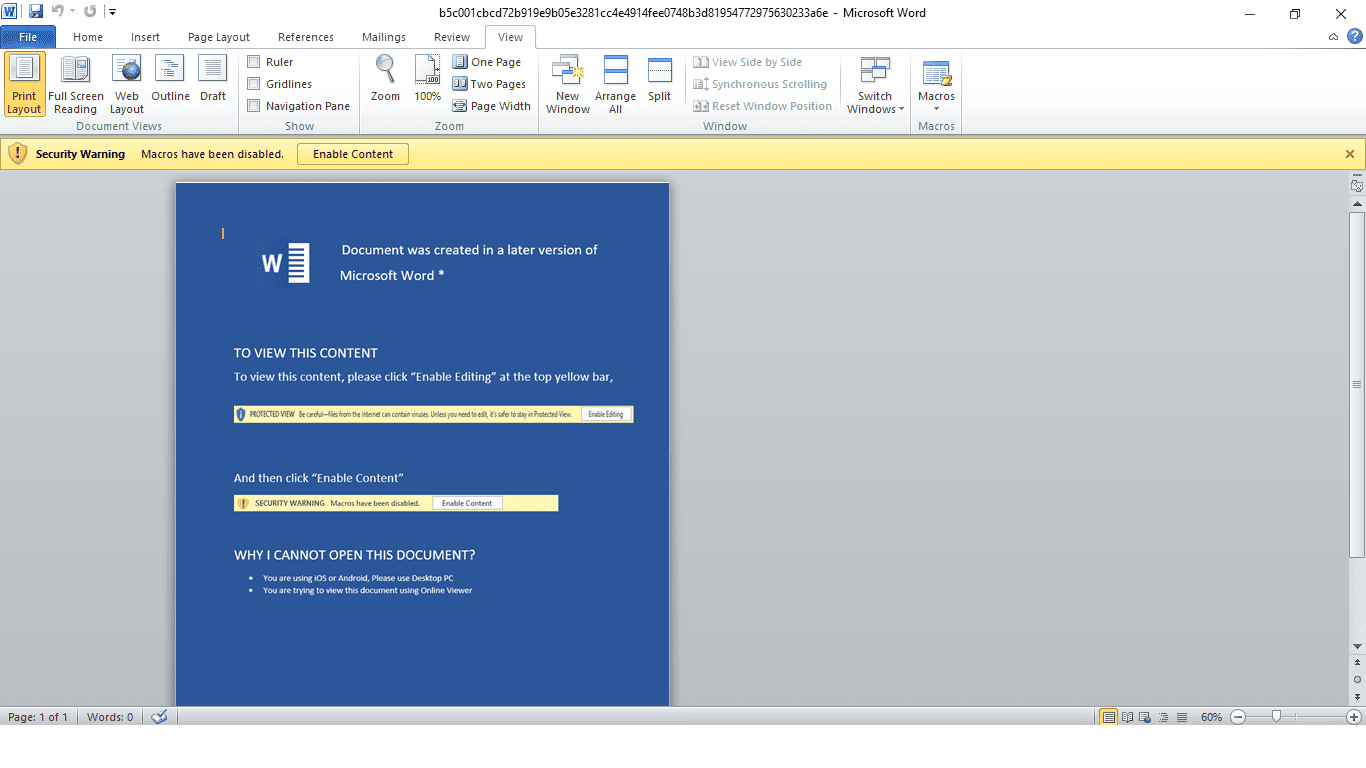
Malicious Word file prior enabling macro
In the ever-evolving world of cybersecurity, new threats constantly emerge, challenging the vigilance of digital defenders. Recently, the cybersecurity landscape witnessed a sophisticated Nim-based campaign, masterminded to exploit the vulnerabilities of unsuspecting online platforms. Two security researchers Ghanashyam Satpathy, and Jan Michael Alcantara from Netskope delve into the intricacies of this menacing cyber operation, unraveling its methods, targets, and implications for the broader digital security community.
The campaign unfolded stealthily, leveraging the relatively new Nim programming language to construct a malicious backdoor. This choice of language offered attackers a veil of obscurity, making the malware difficult to detect and analyze. With the dark power of ransomware at its core, the campaign targeted a range of online platforms, using deceptive tactics to ensnare victims.

At the heart of this operation was a cunningly crafted Word document, masquerading as a benign attachment from a Nepali government official. Once opened, the document prompted users to enable macros, triggering the execution of a hidden, auto-trigger routine. This sequence unleashed the Nim backdoor, opening the floodgates to data interception and theft.
To further cloak its malicious intent, the campaign employed a series of sophisticated evasion techniques. The use of password protection and obfuscation in the VBA project, along with strategically split and concatenated code, allowed the malware to slip past antivirus and static detection mechanisms unnoticed.
The nefarious payload, named “conhost.exe,” was discreetly packaged in a ZIP archive. Once deployed, it lurked within the system, masquerading as a legitimate process while siphoning off sensitive information. This backdoor was designed to operate with the same privileges as the logged-in user, amplifying its potential for harm.
The fallout from this campaign was significant, with numerous online platforms compromised and vast amounts of sensitive data at risk. The use of Nim in malware development signals a worrying trend, as attackers continually seek new ways to outmaneuver security measures. The campaign’s success serves as a stark reminder of the need for constant vigilance and innovation in cybersecurity.
As the digital landscape continues to evolve, so too must our strategies for defense. The Nim-based campaign underscores the importance of staying ahead of the curve, understanding emerging threats, and adapting our security protocols accordingly.